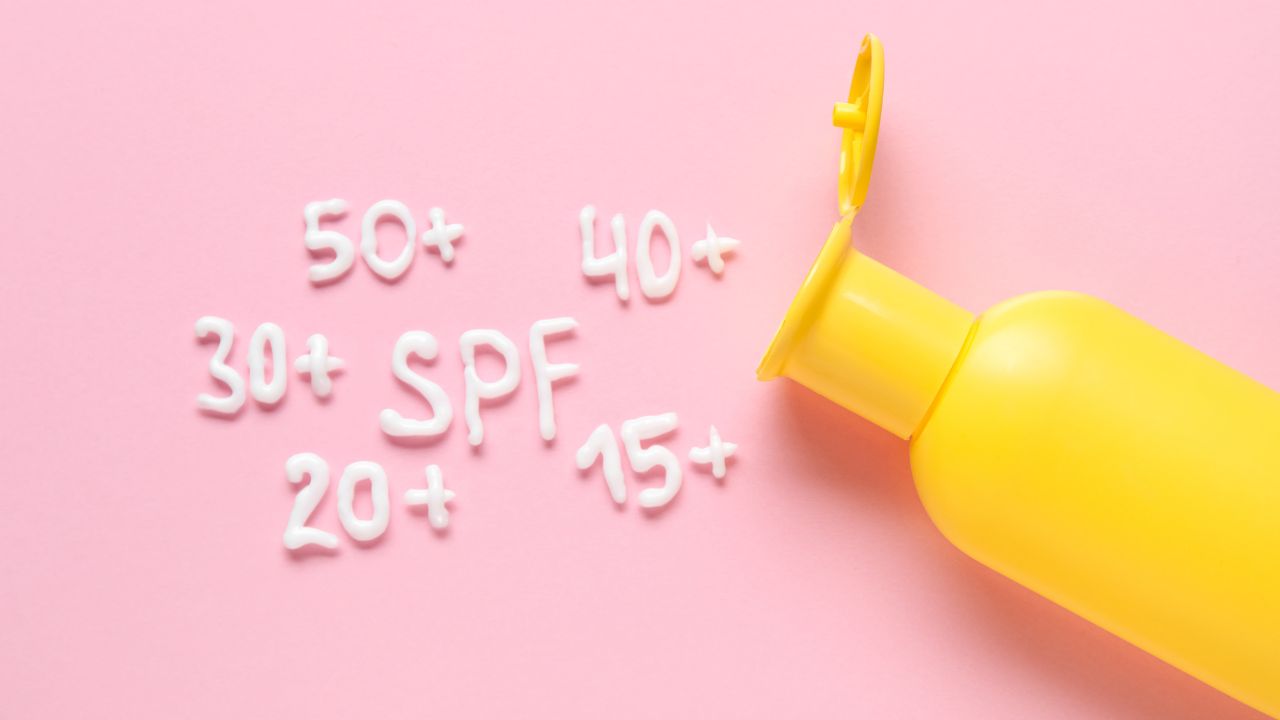Understanding SPF: How to Choose the Best Protection for Your Skin
Have you ever meticulously applied sunscreen and still ended up with an unexpected sunburn? Or perhaps you skipped it on a truly cloudy day, assuming you were perfectly safe, only to notice unexpected redness later? Sun protection can feel genuinely confusing, with numerical SPF ratings, complex UVA versus UVB discussions, and the ongoing debate between mineral and chemical formulations.
The undeniable truth is, UV damage affects everyone—regardless of skin tone, prevailing season, or whether you’re spending your entire day indoors or outside. If you’re unsure which SPF you should be consistently using or precisely how often to reapply it, you are certainly not alone. Let’s systematically break down all these essential aspects so you can confidently safeguard your delicate skin every single day.
3 FREE Perfume Samples
We’ve recently created a Whatsapp group for beauty enthusiasts like you! To grow this community we temporarily offer 3 free perfume samples when you join!
Make sure to join asap, we’re running out of free samples soon! After joining, you can place an order and claim the random free samples.

The Science Behind SPF and UV Protection: Demystifying the Rays
Not all sun exposure is the same, and SPF is merely one crucial piece of a much larger protective puzzle. Understanding the specific types of UV radiation is fundamental.
What is SPF and Why is it Important?
SPF, or Sun Protection Factor, measures precisely how well a sunscreen protects your skin primarily against UVB rays—the high-energy rays directly responsible for causing painful sunburns and directly damaging cellular DNA. If your unprotected skin normally burns in approximately 10 minutes of direct sun exposure, applying a correctly used SPF 30 sunscreen means it theoretically would take 30 times longer (around 300 minutes) to achieve the same amount of redness or burn.
However, SPF alone does not tell the complete story of comprehensive protection. Sunscreen universally labeled as “broad-spectrum” signifies it protects against both UVB rays, which predominantly harm the skin’s surface, and UVA rays, which possess longer wavelengths (320-400 nm). UVA radiation penetrates deeper into the skin’s dermal layer, causing insidious damage like premature aging, fine lines, distinct wrinkles, unwanted sunspots, and significant long-term cellular harm.
Since UVA damage isn’t immediately visible as a burn, many individuals unfortunately underestimate its profound impact—but it’s just as destructive as a visible sunburn and contributes significantly to skin cancer risk.
Differences Between SPF Ratings: Beyond the Numbers
Many wrongly assume that SPF 100 offers double the protection of SPF 50, but that’s not how its protective mechanism functions. The relationship between the SPF number and the percentage of blocked UVB rays is not linear. Here’s a breakdown of how much UVB protection different SPF levels actually provide:
| SPF Level | UVB Protection Blocked |
| SPF 15 | Blocks 93% |
| SPF 30 | Blocks 97% |
| SPF 50 | Blocks 98% |
| SPF 100 | Blocks 99% |
As you can observe, the protective jump from SPF 30 to SPF 50 offers only a marginal 1% additional defense. This means a numerically higher SPF doesn’t necessarily translate into a much stronger shield against UVB. What’s far more important for robust defense is applying a sufficient amount of sunscreen and consistently reapplying it every two hours—and even more frequently if you’re actively sweating or swimming.
How to Choose the Right SPF: A Personalized Approach
Choosing the optimal sunscreen isn’t just about selecting the highest available number. Your daily activities, individual skin tone, and the total amount of sun exposure you anticipate all play a pivotal role in determining the best SPF for your specific needs.
For Different Skin Tones: Universal Vulnerability
Different skin tones react to UV exposure in diverse ways, but it’s crucial to remember that everyone is susceptible to sun damage and skin cancer. Melanin, the pigment that determines skin color, offers some natural protection but is never sufficient alone. Here’s a simple guide to assist you in choosing the correct SPF level:
- Very Fair Skin: Recommended SPF 50+. This skin type burns easily and rarely, if ever, tans. Individuals with very fair skin require diligent protection. Mineral sunscreens may prove less irritating for their delicate skin.
- Fair Skin: Recommended SPF 50. This skin type often burns readily and tans minimally. Needs diligent, frequent reapplication and consistent protective measures.
- Light Skin: Recommended SPF 30-50. This skin type sometimes burns but usually tans gradually. SPF 50 is preferable for extended sun exposure or outdoor activities.
- Medium Skin: Recommended SPF 30-50. This skin type rarely burns but tans easily. Consider SPF 50 for beach days or prolonged outdoor periods due to the cumulative nature of UV damage.
- Dark Skin: Recommended SPF 30+. This skin type does not burn easily but is still at significant risk for sun damage, including painful sunburns, hyperpigmentation (like stubborn dark spots), and all forms of skin cancer. Melanomas on darker skin tones are often detected at later, more dangerous stages.
For Tanning Skin: The Myth of a “Safe” Tan
Many mistakenly believe sunscreen completely prevents tanning, but that’s a persistent myth. Sunscreen works by filtering out a significant portion of harmful UV rays; however, a minute amount can still reach the skin, potentially allowing for a gradual, slower tan.
Crucially, any tan indicates DNA damage. Sunscreen reduces the damage while a tan might still develop, but no tan achieved through UV exposure is truly “safe.” Remember, sunscreen’s effectiveness diminishes over time, so if you’re spending several hours in the sun, reapplication is vital to maintaining any level of protection.
For Babies and Toddlers: Gentle Protection
- Babies under six months old: These infants should not wear chemical sunscreens. Their skin is exceptionally sensitive and absorbs chemicals more readily. The best protection for this age group is strict shade, wearing lightweight, densely woven protective clothing, and a wide-brimmed hat.
- For babies over six months: Choose a mineral sunscreen containing zinc oxide or titanium dioxide with an SPF of 30 to 50. While “baby-specific” sunscreens aren’t strictly mandatory, they are often formulated with fewer ingredients and gentler components to minimize irritation on delicate skin.

Based on Your Lifestyle: Tailoring Your Defense
Your ideal SPF choice depends significantly on your daily sun exposure and activities:
- For everyday use (incidental exposure): SPF 30 is suitable if you spend limited time directly outdoors (e.g., commuting, short walks). Apply it generously each morning as a crucial part of your regular skincare regimen. Remember that UVA rays penetrate glass, so indoor exposure near windows also counts.
- For outdoor activities (prolonged exposure): SPF 50+ is strongly recommended, especially for extended periods in direct sun, beach excursions, water sports, or intense physical activities. Always choose a water-resistant or very water-resistant formula, as labeled.
- For cold weather and high altitudes: Even in winter, snow reflects up to 80% of UV rays, making painful sunburns a real risk. UV intensity also increases significantly with altitude. Use SPF 30+ on all exposed skin, particularly your face, neck, and ears.
Chemical vs. Physical (Mineral) Sunscreens: Understanding the Difference
There are two primary categories of sunscreens: chemical and mineral (also known as physical). Each operates distinctly and presents its own unique pros and cons.
Chemical Sunscreens
How they work: These sunscreens contain organic compounds (e.g., oxybenzone, avobenzone, octinoxate, octisalate, homosalate, octocrylene) that absorb UV rays as they penetrate the skin. They then convert these rays into heat, which is released from the skin.
Pros: They generally feel lightweight, blend effortlessly into the skin without a white cast, and are often water-resistant.
Cons: Some individuals with sensitive skin may experience irritation or allergic reactions. Concerns exist regarding systemic absorption and potential environmental impact (e.g., coral reef damage). They require about 15-20 minutes to become fully effective after application.
Mineral Sunscreens (Physical Sunscreens)
How they work: These contain inorganic active ingredients: zinc oxide and titanium dioxide. They sit on top of the skin’s surface, forming a physical barrier that primarily reflects and scatters UV radiation away from the skin.
Pros: They are gentler on sensitive and acne-prone skin, begin working immediately upon application, and are generally considered more environmentally friendly (especially non-nano formulations).
Cons: They can sometimes leave a noticeable white cast, especially on darker skin tones, and may feel slightly thicker or heavier in texture.
Choosing Your Type: If you have acne-prone or extremely sensitive skin, mineral sunscreen is usually the better choice due to its non-irritating nature. If you prefer a lightweight, invisible finish and do not experience sensitivity, chemical sunscreen may be more suitable for your daily routine. Many hybrid formulations also exist, combining benefits from both types.
Application Tips: Maximizing Your Protection
Using sunscreen correctly is just as important as choosing the right formula. Inadequate application drastically reduces its advertised SPF.
How Much Sunscreen Should You Use?
Most individuals don’t apply enough sunscreen, which severely reduces its effectiveness. Here’s a general, helpful rule of thumb recommended by dermatologists:
- For the face and neck: Use an amount equivalent to a nickel-sized dollop (about 1/4 teaspoon).
- For the entire body: Apply the equivalent of a shot glass full (approximately 2 tablespoons).
- Don’t forget commonly missed areas: These include the delicate ears, the back of the neck, the hands, the tops of your feet, the part line in your hair (or wear a hat), eyelids, lips (use a lip balm with SPF), and inner arms and thighs. These areas are just as vulnerable to damage.
The Importance of Reapplication
Sunscreen naturally breaks down over time due to exposure to light, sweat, water, and even simple friction from clothing or towels. Consistent reapplication is non-negotiable for ongoing protection.
- General Rule: Reapply sunscreen at least every two hours when exposed to the sun.
- Increased Frequency: Reapply even more often—ideally every 40 to 80 minutes—if you’re actively swimming, vigorously sweating, or towel-drying.
- Over Makeup: If you wear makeup, consider using a specialized powder sunscreen with SPF, a spray sunscreen, or a tinted mineral sunscreen stick for convenient touch-ups throughout the day.
Sunscreen Ingredients for Safety: What to Seek and Avoid
Not all sunscreens are formulated equally, and some ingredients may cause irritation for certain individuals or harm the environment. Making informed choices is empowering.
Ingredients to Consider Avoiding (Especially for Sensitive Skin or Environmental Concern):
- Oxybenzone & Octinoxate: These chemical filters have been linked to potential hormone disruption and are known to contribute to coral reef damage, leading some regions to ban their use.
- Fragrances & Alcohol: These ingredients can often cause irritation, allergic reactions, or dryness, particularly for individuals with sensitive or reactive skin types.
- Parabens: These are common preservatives, but some individuals choose to avoid them due to concerns about potential endocrine-disrupting effects, though research is ongoing.
Ingredients to Actively Look For (Generally Considered Safe and Beneficial):
- Zinc Oxide & Titanium Dioxide: These are the active ingredients in mineral sunscreens. They are widely considered safe, highly effective, and notably gentle on even the most sensitive skin. Look for “non-nano” versions for environmental preference.
- Antioxidants (e.g., Vitamin C, Vitamin E, Ferulic Acid, Green Tea Extract): While not providing SPF, these compounds are often found in sunscreens and offer added benefits by helping to neutralize free radicals generated by UV exposure, thus providing an extra layer of cellular protection.
- Hydrating & Soothing Ingredients (e.g., Niacinamide, Hyaluronic Acid, Glycerin, Ceramides, Bisabolol): These beneficial ingredients provide additional skin benefits like enhanced hydration, barrier support, and soothing properties, making the sunscreen more comfortable and beneficial for daily use.
Sunscreen isn’t just for summer or beach vacations—it’s an absolute everyday essential that diligently protects your skin from premature aging, painful sunburns, and the significant risk of skin cancer. Apply generously, reapply often, and choose a formula that precisely suits your individual needs and lifestyle. Your future, healthy self will undoubtedly express profound gratitude.

2 Comments